Text
Conservation of water in Greek civilization.
The ancient Greek civilization, with its deep interest in water and its efficient use, laid the foundation for the implementation of innovative water conservation methods in its time. More than 2,500 years ago, figures such as Thales of Miletus recognized the importance of water as "the universal substance" from which everything came. This awareness and appreciation for water led ancient Greece to develop advanced water distribution and purification systems, with a particular focus on the quality of the water resource.

This text provides historical context related to water management in ancient Greece, specifically in the city of Athens, during the 5th century BC. In that period, Athens experienced significant population growth, which posed challenges in terms of water provision and its efficient distribution.
In this context: Water sources: It is mentioned that the Greeks used various sources of water, including runoff water, well water and rainwater, to meet their daily needs. However, the increase in population generated the need for better water management and distribution.
In ancient Greece, various individuals and groups played an essential role in promoting water conservation and implementing advanced systems for its distribution and quality. Here is a summary of his contributions:
-Thales of Miletus: A prominent Greek philosopher and thinker who lived more than 2,500 years ago. Thales recognized the fundamental importance of water by stating that it was the "universal substance from which all things came." His observation that "water is best" reflected awareness of the importance of water in life and nutrition. Their influence helped focus attention on the need to conserve and wisely use this vital resource.
-Engineers and urban planners of ancient Athens: These professionals were involved in the planning and construction of water distribution systems in the city of Athens, such as the use of general sewers that collected water from various sources and directed them towards the Eridanus stream. . Their work was crucial in ensuring that population growth could be sustainable without depleting available water resources.
-Innovators of the water clock: Although the text mentions its origin in Mesopotamia, it is evident that ancient Greece appreciated the need to measure time and, therefore, the efficient management of daily activities. The water clock, a time-measuring device based on the constant flow of water, reflects the interest in using water not only for everyday life, but also as a tool for measuring and controlling time.
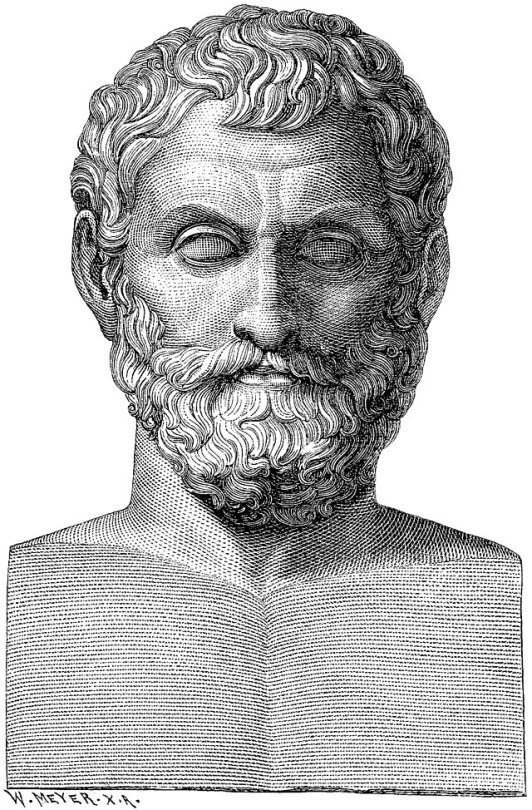
In Ancient Greece, water distribution systems and purification methods were implemented, highlighting interest in water quality. The construction of sewage networks and the use of aeration reservoirs to purify water reflected the importance of water management. Additionally, the ancient water clock, based on the constant flow of water, provided an essential measure of time in everyday life. The impact of these historic developments included an improvement in water quality and water supply management, which contributed to the well-being of the population. These principles of water management and awareness of its importance paved the way for future water conservation practices and policies in history.

The history of water management in ancient Greece provides valuable lessons that remain relevant today in terms of water conservation. Despite living in a very distant time, the Greeks were already concerned about the quality and availability of water, highlighting the importance of this vital resource. The construction of distribution systems and the use of aeration reservoirs to purify water show an early focus on ensuring that the water was clean and safe for consumption. This is relevant today, as water quality remains a crucial concern. These historical lessons are relevant today, where water conservation and proper management remain major challenges in a world with growing concerns about availability. and water quality.
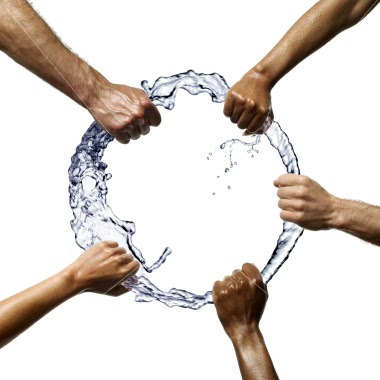
In summary, the history of water management in ancient Greece reminds us of the importance of valuing and conserving this vital resource. Figures such as Thales of Miletus and the engineers of Athens established advanced water distribution and purification systems. These historic principles remain relevant today as we face global challenges in water conservation and quality. It invites us to reflect on how to apply these lessons in modern water management and address current challenges. Water is an essential resource that we must protect and manage wisely for future generations. Now analyze, what measures can we take to ensure better use and conservation of water in our current world?
0 notes
Text
Water law in Spain,1879
Water is a vital and very precious resource that we have, imagine if we didn't live with it. This almost happened in 1879 with the water law in Spain, which marked a revolutionary moment by establishing that water was a resource shared by all, not private property. This law divided the country into hydrographic basins, guaranteeing equitable use and prioritizing access to drinking water and agriculture. His legacy lives on in our current concerns about water conservation and equal access. That is why today we will be analyzing in depth about this historical event.
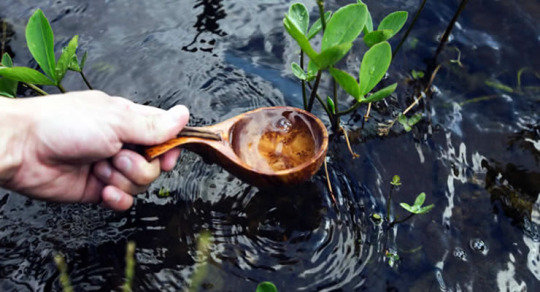
The Water Law of 1879 was a key piece in the history of water management in Spain and served as a model for other water-related legislation around the world. It established the principles of public domain of water, priority of use and management by hydrographic basins, which remain fundamental in sustainable water management today.
No doubt, notable historical figures such as Charles III of Spain, Rachel Carson, and Dr. John L. Leal left a significant mark in promoting water conservation and evolving regulations and approaches to ensure more careful and safe use. of this vital resource. Charles III, Spanish monarch of the 18th century, promoted the construction of irrigation systems, dams and canals to improve water management in agriculture and contributed to the future development of water-related legislation. Rachel Carson, recognized for her influence on environmental conservation, raised awareness about water pollution and its impacts on wildlife and human health through her influential book "Silent Spring." For his part, Dr. John L. Leal, at the beginning of the 20th century, implemented the first chlorine water disinfection plant in the United States, playing a key role in the eradication of waterborne diseases.
These historical figures played a vital role in promoting water conservation and evolving regulations and practices aimed at ensuring more responsible and safe use of this essential resource.

The impact that this historical fact had was that by establishing that water is a public domain resource, the law emphasized the importance of water being a good shared by all citizens. This principle remains fundamental in water conservation, as it underscores the need for equitable and sustainable use of this vital resource. In addition, this gave way to the implementation of The implementation of a control and inspection system has contributed to enforcing regulations and ensuring that users adhere to the conditions of their water use permits. This has had a positive impact on conservation by preventing irresponsible practices.

The Water Law of 1879 in Spain lays the foundation for sustainable water management, and the lessons drawn from its history are highly relevant to current water conservation challenges. As we know we face significant threats in terms of water scarcity, pollution and increasing demand for this vital resource. This historical fact leaves us with a legacy that today management by Hydrographic Basins is used: The division into hydrographic basins teaches us that water management must consider the interconnections between regions. In a context of climate change, where rainfall patterns may be altered, watershed-based management can help prevent conflicts over water and promote conservation. Practices and policies based on these historic principles are essential to ensure a sustainable future of water management and conservation.

In summary, the Water Law of 1879 in Spain established crucial principles for the sustainable management of water, highlighting its nature as a shared public resource. Watershed management practices, prioritization of essential uses and control are equally relevant today. Historical figures such as Charles III, Rachel Carson, and Dr. John L. Leal played important roles in promoting water conservation. These historical lessons inspire responsibility to protect and wisely manage water for future generations.
0 notes
Text
The history of water treatment
The history of water treatment is a journey that highlights the evolution of science and technology in relation to water safety and quality, underscoring its link to public health. Over the centuries, there has been a constant struggle to improve the quality and safety of water for human consumption, reinforcing the perennial importance of water conservation. Contemporary challenges, such as pollution and water scarcity, compel us to continue to innovate and collaborate to ensure a future in which water remains a valuable and accessible resource for all.
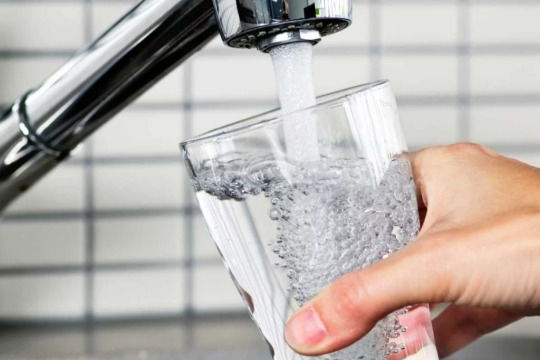
Already between 4,000 and 2,000 B.C., drinking water purification methods were used, such as boiling water, placing it in the sun, filtering it through charcoal or sand or storing it in copper containers. The Egyptians, in 1500-400 B.C., purified water by boiling it over a fire, heating it in the sun or immersing a piece of hot iron in it. Another common method was to filter boiled water through sand or gravel and then let it cool.

Egyptians (1500-400 BC): They used methods such as boiling, exposure to the sun, filtration through sand or gravel, and coagulation with mineral and vegetable substances to purify water.
Hippocrates (460 - 354 BC): In his writings on public health, he recommended boiling and filtering water before drinking it.
Louis Pasteur and Robert Koch (19th century): Their research established the importance of microbiology in water filtration and its relationship with diseases.
Dr. John Snow (19th century): Used chlorine to disinfect London's water supply after a cholera outbreak, challenging belief in miasma theory. Their actions influenced the organization of public health and the improvement of water and sanitation systems.
First chlorination plants (1902): In Middelkerke, Belgium, the first permanent water chlorination plant was launched.
Dr. John L. Leal (Early 20th century): Implemented the first chlorine water disinfection plant in the United States in Jersey City. His knowledge of chlorine and its application in disinfection contributed significantly to the eradication of waterborne diseases.

The impact of this historic event is reflected in the development of water purification techniques, such as filtration and chlorine disinfection, which enabled the delivery of safer and more reliable drinking water to communities. This contributed to improving public health by reducing the spread of waterborne diseases, encouraging stricter environmental regulation policies and awareness of water conservation. In summary, the development of water treatment techniques had a significant impact on awareness of water conservation, the implementation of more rigorous environmental regulations, and the promotion of technological innovation for the sustainable use of this vital resource.

The history of water treatment, over the centuries, has demonstrated humanity's creativity and innovation in the search for safe water. A notable example is the adoption of water disinfection in the late 19th and early 20th centuries, in response to the realization that waterborne microorganisms could cause disease. The introduction of chlorine was essential to reduce epidemic outbreaks. As we move into the 21st century, technology continues to transform water treatment, with challenges such as environmental sustainability and the detection of contaminants in trace amounts. In summary, the history of water treatment underscores humanity's ability to address critical challenges over time and offers lessons applicable to water conservation and security today.
In conclusion, the history of water treatment shows how science, technology and public health are intricately related, highlighting the importance of water quality. Over time, we have improved water security, emphasizing the continued need to conserve this resource. From ancient methods like boiling to chlorine disinfection in the 20th century, we have reduced waterborne diseases. In the 21st century, we face challenges such as pollution and scarcity, underscoring the importance of innovation and collaboration to keep water accessible and sustainable. This story reminds us that the lessons of the past are essential to forging a future of water conservation.
0 notes
Text
Water droplet
Water, the source of life and well-being for all creatures on our planet, is a treasure whose value we often overlook. Although it may seem abundant, the truth is that only a small fraction of the Earth's water is suitable for human consumption, making it a precious and limited resource. Through this blog, we will venture into the world of water conservation, exploring its vital importance and discovering how each of us can play an essential role in its preservation. Part of knowing the importance of water involves starting with awareness, which is why today we bring you a literary analysis of the poem "Water droplet" (Alejando J. Diaz Valero), which deals with this topic.

The symbolism of water in the poem can be understood as a symbol of purity, vitality and renewal. The author uses the image of a "little drop of water" to personify water and enhance its beauty and value.
"Vital liquid": By calling water "vital liquid", the author underlines the essentiality of water for life. This term symbolizes the need to conserve water to ensure the survival of all forms of life on Earth.
"Little drop of water quenches my thirst": Here, thirst represents a fundamental human need that can only be satisfied with water. This symbolizes the importance of water conservation to ensure access to a vital resource for humanity.
"My dear friend, I will drink from you": This line personifies water as a friend, symbolizing the close relationship we have with this essential resource. It highlights the need to care for and preserve this "friendship" for a sustainable future.
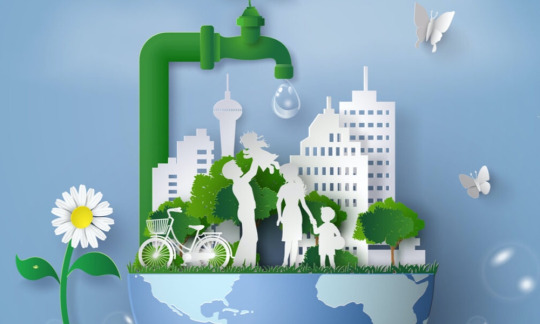
The main message the author wants to convey, in relation to water conservation, is the importance of valuing and preserving water as a vital resource for life and well-being. The author highlights how water is pure, essential for cleanliness, a vital element for nature's spring, and how it satisfies thirst. Through these descriptions, the author stresses the need to take care of water, use it responsibly and not take it for granted, as it is essential for our lives and for the health of our planet. In my opinion the poem promotes awareness about water conservation and the responsibility of each one of us in its preservation. For centuries the vital importance of water has been expressed globally and locally: culture, use, water cycle have referred to the "grey" infrastructure to improve the management of water resources, have considered that traditional and indigenous knowledge, local knowledge that protects the natural infrastructure, has usually been left aside.
Water is a resource that today is in danger because many of us have squandered it and have not been able to appreciate it, that is why we have implemented methods for its conservation such as efficient irrigation technology: Using drip irrigation systems and moisture sensors to optimize agricultural irrigation. According to the Food and Agriculture Organization of the United Nations (FAO), drip irrigation systems can save up to 60% of water compared to traditional methods. We can also start conserving water at home by following these tips:
-Install water-saving devices: Place low-flow devices on faucets and showerheads. This reduces the amount of water flowing without sacrificing water pressure.
-Use washing machine and dishwasher with a full load: Wait until you have a full load before using the washing machine and dishwasher to maximize water use efficiency.
-Hot water recirculation: Install hot water recirculation systems to reduce water waste while waiting for hot water to reach the faucets.
-Xeriscaping: Opt for drought-tolerant plants and use landscaping techniques that require less watering, such as xeriscaping.
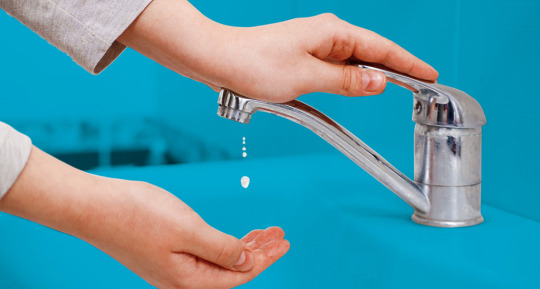
In short, water conservation is a shared responsibility that falls on each of us, and it is essential that we take concrete steps to preserve this vital resource. Whether through artistic creativity, implementing technology, promoting education or adopting conscious practices in our homes, we can all play a role in building a more sustainable future. Ensuring that future generations can enjoy an adequate supply of water involves a combination of awareness and action, and these are the fundamental keys to conserving water and protecting our planet. Now that you know this, what are the economic benefits of water conservation and how could we motivate businesses and governments to adopt more sustainable practices?
0 notes
Text
Water, where are you going?
As we know, water not only serves to hydrate our bodies, but is also a regulator of terrestrial ecosystems, maintaining the balance necessary for the subsistence of animals and plants. That is why in order to raise awareness about how important water is in our lives, we will be analyzing the poem by Federico Garcia Lorca entitled "Water, where are you going?" In which he talks about the mismanagement of the most precious natural resource which is water.
The poem reflects water as a symbol of movement, fluidity and constant change. Represented by a river flowing into the sea, it is an element in constant motion and transformation, while other natural elements such as the sea, the fountain and the poplar can be more static and reluctant to change.Overall, the author uses water as a symbol to reflect on the nature of life, the search for purpose and the resistance to change, creating a sense of enigma and contemplation in the poem.
Water, where are you going?
Laughing I go down the river
to the shores of the sea.

Federico García Lorca's poem focuses on the idea of search and desire in life. He uses nature, such as water, the sea, the river and the poplars, as metaphors to represent these concepts. Each element of nature pursues its own path and desire, sometimes in ways that are mysterious to others. The poem highlights the beauty and complexity of nature, as well as the enigma and ambiguity of human desires. From my perspective the poem has a great meaning as it highlights life and how humans complement each other with natural resources, in this case water, because without it there is no life. The importance of water has been seen since ages past starting from The Sumerians were situated between the Tigris and Euphrates rivers. The way they used water played a decisive role in their socio-economic evolution.
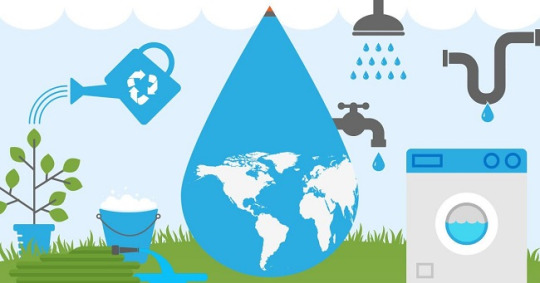
Because of all this it is important to take action as water is currently at risk. It is important to know that there are methods that help conserve water, for example in our country we use methods such as water recycling that involves the reuse of treated water in industrial and domestic processes. According to the Ministry of Environment of Ecuador, water recycling has increased significantly in recent years, contributing to the conservation of water resources. Es to makes 9% of water recycled, 19% is incinerated, 50% ends up in landfills and 22% evades waste management systems. Now we also have to start saving water in our homes, so we can start by following these tips:
-Turn off the faucet while brushing your teeth or washing your hands.
-Don't use the toilet as a wastebasket. Throw garbage in the wastebasket.
-Wash clothes in full loads. Use the right amount of water for each load.
-Use a dishwasher instead of washing dishes by hand. Dishwashers use less water than washing dishes by hand.

In summary, this essay highlights the importance of water as a vital resource for both human hydration and the balance of terrestrial ecosystems. Through the analysis of Federico García Lorca's poem, it explores how water becomes a symbol of movement and constant change, which invites us to reflect on the nature of life, the search for purpose, and resistance to change. The essay also highlights the importance of water conservation and provides examples of methods to achieve this, with a focus on the context of Ecuador. Individual responsibility for the preservation of this essential resource is emphasized and practical tips for saving water in the home are provided. Overall, the text emphasizes the interconnection between water, life. Now you, what do you think are the main threats to the availability of freshwater in the world? How could we address these threats?
0 notes
Text
The adventurous water drop
Today we know that thanks to our selfishness we are losing one of the most important resources we have, which is water. That is why the first step to try that this resource does not run out is to raise awareness about our bad habits of water conservation. Today we will be analyzing a short story by the authors Ibarrola, Begoña, Delicado Gallego, Federico entitled "The adventurous water drop". The adventurous water drop", aimed at children which tries to raise awareness from a young age about the importance of water in our lives through its changing forms.

The story of "The Adventurous Water Drop" features several symbolic elements that relate to water conservation and its importance. Here are some parts of the story that reflect this symbolism:
The drop of water that wants to explore the world: This drop represents curiosity and a desire for adventure, symbolizing the need to explore and better understand the world in which we live. This can be related to the awareness of the importance of understanding and conserving natural resources, such as water.
Evaporation and the return to the lake of origin: The drop of water evaporates and, in the end, returns to the lake where it was born. This can be interpreted as a reminder that although water moves and is used in different places, it always returns to its original source. This idea can be related to the importance of conserving and protecting water sources, such as lakes and rivers.
Meeting other water droplets with interesting stories: During its journey, the water drop meets many other water drops with fascinating stories. This can symbolize the idea that every drop of water, and by extension every person, has its own unique story and experience. It is important to value and learn from these experiences for sustainable water management.
The stream leading back home: The stream leading the water drop back to its lake of origin represents a path or process that can lead us back to the conservation and protection of our water resource. It is symbolic of the need to find sustainable and practical ways to maintain access to water.
Overall, this story uses the adventure of the water drop to highlight the importance of understanding, respecting and conserving water. Each part of its journey symbolizes different aspects of the relationship between water and humanity, as well as the need to preserve this vital resource for the well-being of all.

The main message of the story is that water is always in motion, transforming from one form to another and ensuring that life on Earth can continue. But it is also important to remember that we, as humans, play a crucial role in this cycle. We must be conscious of how we use and care for water, to ensure that it continues to flow in harmony with nature. In my opinion, the story is a good one, as it is aimed at children, so that when they grow up they know how to be careful with what the earth gives us. Since ancient times we have been working to take care of water, an example is that civilization created canals and lagoons to take advantage of the water in each flood. Great cities, such as Babylon, were founded on its banks. From there we realize how important it is in the world.

Water conservation is a global challenge that involves the implementation of various methods and technologies. This includes graywater reuse, the use of water-saving technologies in agriculture, rainwater harvesting, wastewater treatment and recycling systems. According to experts in the field, graywater reuse is crucial for conserving freshwater and reducing pressure on drinking water sources. Technologies that improve irrigation efficiency in agriculture play an important role in reducing water waste in this critical sector. That's not to say that we can't start conserving water at home, so here are a few tips:
-CHECK AND REPAIR LEAKS.
Leaks in pipes and faucets may seem insignificant, but they represent a huge waste of water.
-USE WATER SPARINGLY
Excessive use of water in daily activities such as washing dishes, washing clothes, bathing or watering plants can cause a great waste of water.
-TAKE CARE OF SEPTIC SYSTEMS
In rural areas or areas far from public sewer systems, septic systems are used for wastewater treatment.
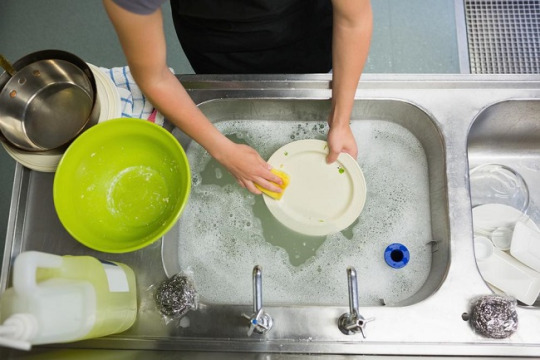
In conclusion, water conservation is a shared responsibility that requires the participation of individuals, communities, governments and organizations around the world. Awareness and adoption of sustainable practices are essential to ensure that this critical resource is available for future generations. It is a call to action to care for and protect one of our most precious resources: water. Now that you know about all this, tell us what is your vision of a sustainable future in terms of water conservation?
0 notes
Text
How did I save water yesterday?
Yesterday I did five principal things to save my water in my house, the first thing I did is that I reused water to wash my dishes in the morning, then I took a shower just for 10 min, I did not leave the faucet running while brushing my teeth. Then we went to dinner outside so we didn't wash the dishes and the last thing is that we didn't use the washing machine.

1 note
·
View note